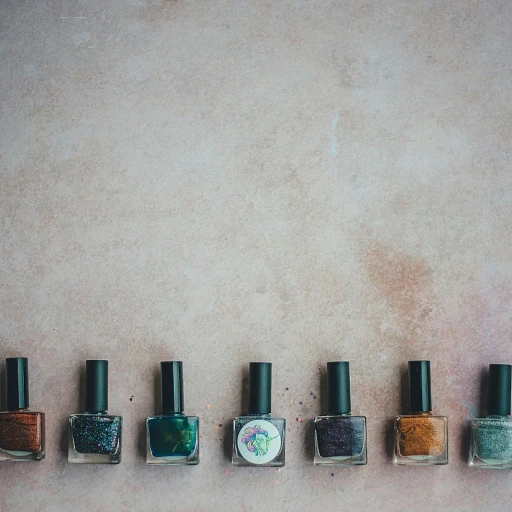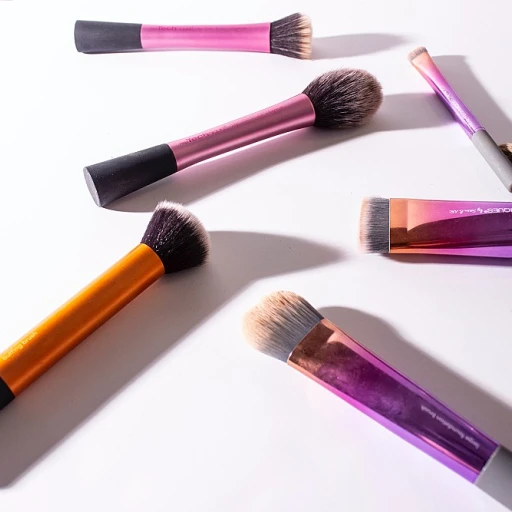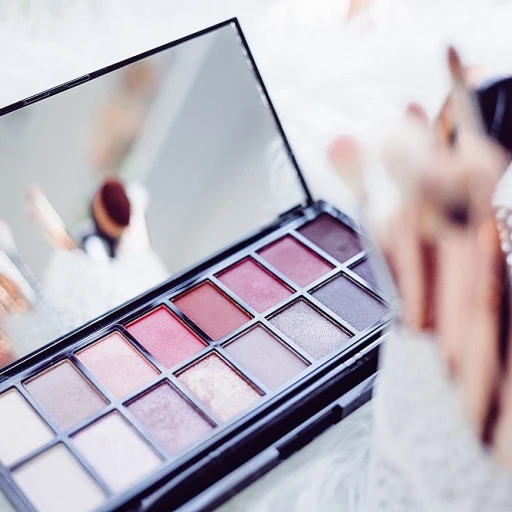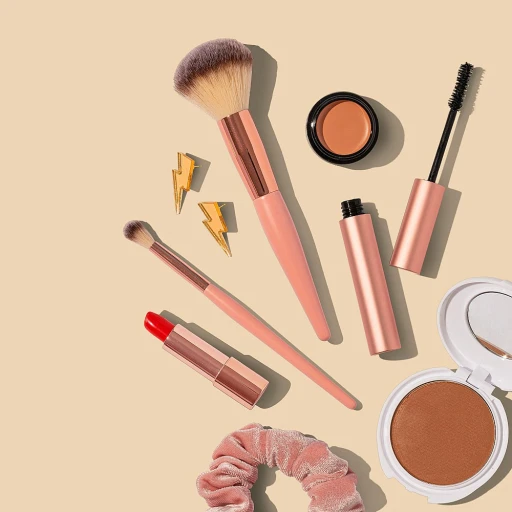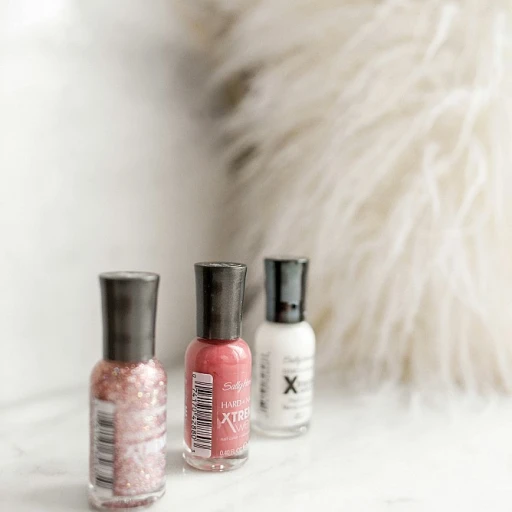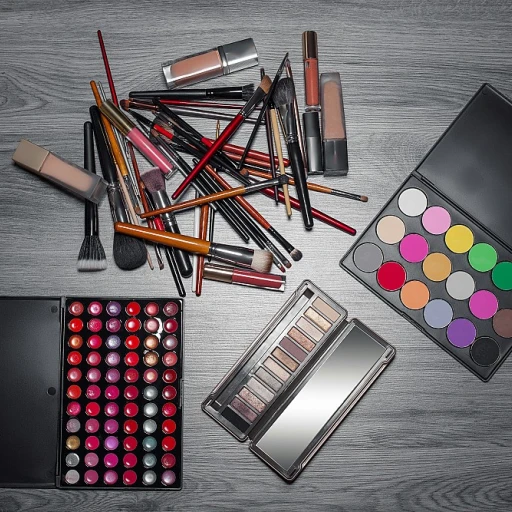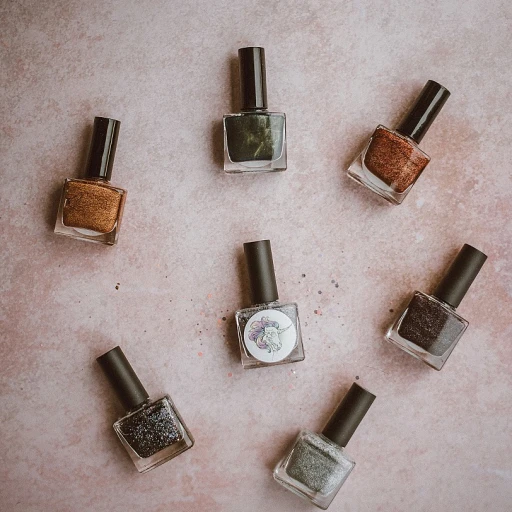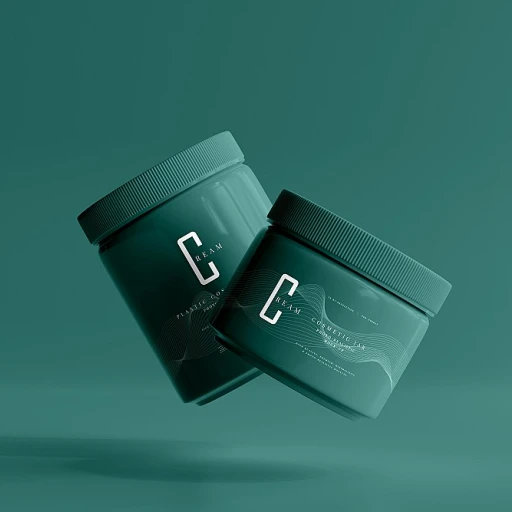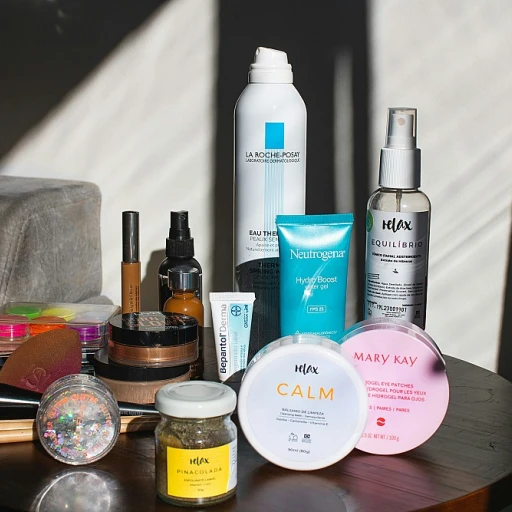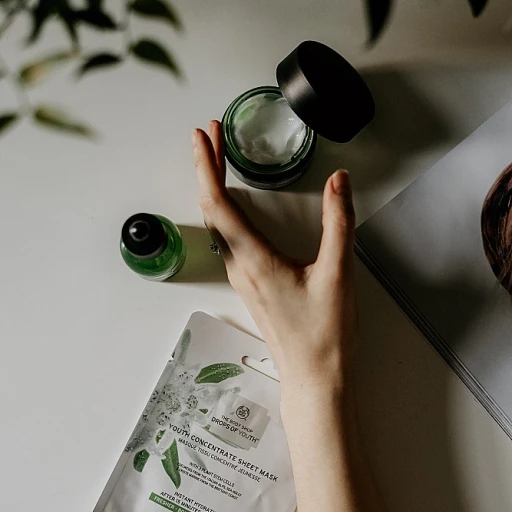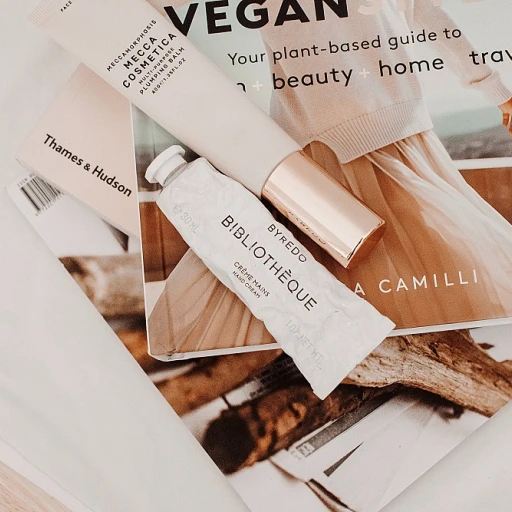Understanding the allure of luxury scents
Discovering the charm of high-end aromas
The magnetism of luxury scents is something beyond simple fragrance. The allure lies in the careful selection of ingredients, often sourced from the rarest and most exotic locations. For example, the famed nose, Jacques Cavallier, often emphasizes using unique elements like Tunisian orange blossom or Laotian oud, giving each scent a story and soul.
According to a study by Grand View Research, the luxury perfume market size was valued at USD 11.2 billion in 2019 with a CAGR (compound annual growth rate) of 8.4% from 2020 to 2027. The fascination with luxury scents isn't just about the smell; it's about the experience. Obvious examples include brands like Roja Parfums or Maison Francis Kurkdjian, ensuring each product evokes emotion and nostalgia, heightening the sensory journey.
In an interview with Givaudan perfumer Alberto Morillas, it is noted that luxury scents are often crafted with absolute precision and patience, sometimes aging for several years before they reach consumers. This meticulous process, backed by the insights of seasoned experts, differentiates high-end fragrances from their mass-market counterparts.
Luxury scents often come with a higher price tag, and consumers are willing to pay for the exclusivity and quality. Data from Statista indicates that the average price per unit for luxury fragrances was around $205 in 2020.
Consumer reviews reveal the depth of connection people have with their chosen fragrances. For many, a luxury scent is a signature, part of their identity. Positive endorsements and reviews significantly impact sales, encouraging others to explore and indulge in this olfactory art form.
For more on experiencing the miniature magnificence of luxury fragrances, check out this luxurious experience in miniature.
The role of pricing in luxury fragrances
The financial importance of premium fragrances
In the realm of luxury scents, pricing plays a pivotal role, acting as both a marker of quality and exclusivity. According to a report by Grand View Research, the global luxury perfume market was valued at USD 9.9 billion in 2018 and is expected to grow at a CAGR of 2.9% from 2019 to 2025.
When a brand sets a price high or low, it sends a message: high prices signify exclusivity and superior quality, while lower prices might suggest wider accessibility. As noted by fragrance expert Michael Edwards, “Price is often the first filter for shoppers in the luxury fragrance market; a high price tag offers not just a product, but an experience.”
How premium pricing affects a candle's appeal
Luxury candles are a prime example of how pricing impacts perceived value. A study conducted by NPD Group highlighted that candles priced at or above USD 40 are perceived as premium, combining aesthetic value with olfactory pleasure. The White Company’s Seychelles candle, with its regular price unit set at USD 55, is a bestseller due to its luxurious blend of bergamot, amber, and vanilla.
The influence of packaging on consumer perception
Packaging undeniably influences perceived value and justifies premium pricing. A luxury scent in an exquisitely designed bottle or a candle in an artisan glass jar enhances the overall buying experience. For example, Jo Malone’s Sea Salt and Grapefruit candle, presented in sleek, minimalistic packaging, sells for a regular price of USD 70 and often sees high sales during holiday seasons.
[For more on the art of how packaging can affect perception, check out our detailed exploration on the art and science of face paint in luxury cosmetics.]
It’s also crucial to consider the economic principle of “price anchoring.” Fragrance brands often leverage this by setting a price anchor with a higher-end product, making their moderately priced offerings seem more attractive in comparison.
Expert insights into consumer behavior
In conversations with industry insiders like Roja Dove, renowned perfumer, it’s clear that customers are willing to invest in scents that promise an emotional connection and a memorable experience. “People buy perfumes not just for the smell, but for the feelings they evoke,” he states. This emotional engagement often justifies the premium price points consumers are willing to pay.
In summary, pricing in the luxury fragrance industry is a complex interplay of quality, exclusivity, packaging, and emotional appeal, each contributing to the overall allure and market success of premium scents. Whether it’s a high-end candle or a niche perfume, the price tag is more than just a number—it’s a statement.
Popular scent profiles in luxury candles
Timeless aroma blends
When it comes to luxury candles, the scent profiles play a crucial role in their appeal. Historically, certain fragrances have dominated the market due to their unique ability to evoke specific emotions and memories. Among these are vanilla, lavender, sea salt, and cedarwood.
A study by the National Center for Biotechnology Information (NCBI) revealed that 80% of consumers associate vanilla with feelings of warmth and comfort. This makes vanilla a staple in many luxury candle collections. The calming effect of lavender cannot be underestimated either. Research from the PubMed highlights that lavender not only has a soothing aroma but also potential therapeutic benefits, making it a popular choice.
Seasonal favorites
Seasonal scents also tend to capture consumer interest. For example, pumpkin spice emerges as a best-seller during the fall. A survey conducted by Standard Media indicates that 45% of luxury candle consumers gravitate towards seasonal scents due to their nostalgic value.
On the cutting edge of scents
Innovative combinations are always attracting the luxury fragrance market's discerning nose. Brands are experimenting with unconventional blends like lavender mint and sea salt grapefruit. These blends bring fresh scents into homes, offering new experiences. The 2021 Fragrance Report by the Fragrance Foundation noted a 25% increase in the sale of such unique aromas compared to regular offerings.
Another rising trend is the incorporation of woodsy aroma profiles aimed at providing a touch of nature indoors. Luxury candles like those infused with sandalwood and cypress can create an ambiance reminiscent of tranquil forest settings. As noted by the Wall Street Journal, these best selling candles offer consumers a premium olfactory experience that transcends the ordinary.
Market trends and shifting preferences
Consumer preferences in the luxury scent market are continually evolving. The growing inclination towards eco-friendly packaging and sustainable ingredients is influencing product offerings. With 68% of millennials prioritizing sustainability, brands are leaning towards natural and ethically-sourced materials in their candle production process (source: WARC).
Moreover, reports from Stars Cosmetics reveal that micro-customization in fragrances is gaining traction, allowing consumers to tailor scents to their personal preferences more than ever before.
The impact of packaging on fragrance sales
Elevating fragrance appeal through elegant packaging
The world of luxury scents is not just about the aroma; it's a multi-sensory experience. A significant aspect that can never be overlooked is packaging. Why? Because first impressions matter—a lot. From the moment you lay eyes on a beautiful vanilla candle, its elegant packaging becomes a part of the fragrance story.
The psychology behind luxurious packaging
Research suggests that over 70% of purchase decisions can be influenced by the visual appeal and physical touch of product packaging (Marketing91). It’s all in the details: velvety boxes, intricate designs, and seamless finishes. A lavender reed diffuser encased in exquisite glass doesn’t just fend off bad odors; it becomes a statement piece, a decor element for your home.
High quality packaging equals higher perceived value
A recent NPD Group report found that consumers are willing to pay 40% more for products with premium packaging. Take the sea salt grapefruit fragrance collection—its packaging reflects sophistication, resonating with customers seeking exclusive, high-value items.
Eco-friendly packaging trends in luxury
Sustainability is no longer an afterthought but a driving force in consumer choices. Brands employing eco-friendly materials in their packaging like reusable glass or biodegradable boxes are capturing a dedicated following. A survey from McKinsey highlighted that 68% of consumers prioritize sustainability, even if it comes at a higher price.
Sourcing materials and craftsmanship
Expensive fragrances often come in meticulously crafted containers sourced from around the globe. For instance, some brands utilize crystal from Baccarat, French artisans known for intricate glassware. This level of craftsmanship drives up the price but delivers on luxury experience.
Personalization and exclusivity
Pioneering brands understand the allure of personalized packaging. Limited edition ranges see individual numbering and custom monograms, enhancing the product's exclusivity. Customer reviews frequently highlight how such details elevate their experience, making them feel valued and unique.
While we've discussed the critical role of pricing (explored thoroughly in previous sections), the impact of sophisticated packaging cannot be overstated. This tactile element often seals the deal, transforming a simple purchase into an indulgent treat.
The significance of reviews and consumer feedback
Why consumer reviews matter for luxury scents
Analyzing consumer feedback for luxury scents is vital. People often rely on reviews before making splurge-worthy purchases, and in the world of high-end fragrances, this sentiment rings especially true. According to a 2022 study by BrightLocal, 87% of consumers read online reviews for local businesses, and luxury fragrances fall into a similar purchasing pattern.
Data insights into luxury fragrance reviews
A report by Euromonitor International highlights that nearly 75% of luxury fragrance consumers in the USA rely heavily on online reviews before choosing their next scent investment. These figures underscore the pivotal role reviews play. Top-rated scents like 'Sea Salt Grapefruit' and 'Lavender Mint' often see a spike in sales post glowing reviews.
The influence of social proof
Prominent fragrance expert Roja Dove notes, "Social proof, particularly through reviews, can make or break a fragrance's success." Dove's insights are corroborated by the influx of influencers and bloggers who provide free shipping orders insights and detailed reviews, effectively steering mass opinion.
Case study: diptyque candles
Luxury brand Diptyque is a prime example. Their 'Limited Edition' candles often sell out fast, thanks to rave reviews and an impeccable sensory experience. The 'Vanilla and Lavender' candle collection is known for having a near-perfect 4.9-star rating on major retail websites like Nordstrom and Sephora. These consistent positive reviews cement consumer trust and brand loyalty.
Emotional appeal in reviews
Consumers often describe their luxury purchases with great emotion, tying the olfactory experience to memories. "This candle completely transforms my living space, turning it into a cozy sanctuary," writes one satisfied customer of a 'Reed Diffuser.' These personal anecdotes become powerful testimonials and often trigger a 'buy' decision.
Negative feedback: a learning opportunity
Negative reviews also play a critical role. They provide brands with valuable feedback and the chance to improve. For consumers, seeing how a brand addresses negative feedback can be a trust-building exercise. Brands that take corrective action and communicate this back through venues like Shopify and other e-commerce sites tend to retain customer loyalty better.
Trends observed from reviews
Consumer reviews often highlight emerging trends. For instance, searches for 'pumpkin spice' and 'sea salt' fragrances peak during specific seasons. Monitoring these trends through platforms like Google Pay Mastercard can help brands adjust their marketing strategies.
Conclusion: harnessing reviews for success
Understanding and leveraging consumer reviews can spell the difference between a top seller and a shelf-warmer. Whether it’s through positive feedback or tactical response to complaints, reviews navigate the buying journey, providing social validation and driving sales.
Trends in the luxury fragrance market
The growing influence of niche fragrances
Luxury fragrances have seen a surge in unique, niche scents that appeal to consumers looking for something genuinely different from mainstream offerings. This trend has been solidified by a growing market desire for personalization and exclusivity. According to a 2022 report by NPD Group, niche fragrances grew by 18% in sales, showing that consumers are willing to pay a premium for distinct and often artisanal scents. Experts like Roja Dove, a renowned perfumer, suggest that this trend is driven by a culture increasingly valuing craftsmanship and individuality over mass production.
Sustainability in luxury fragrances
Sustainability is becoming a crucial trend in the luxury fragrance market. High-end brands are investing in eco-friendly packaging and sustainably sourced ingredients to meet the demands of environmentally conscious consumers. L’Oréal's 2021 sustainability report highlighted that 45% of its luxury division’s packaging is now made from recycled or bio-based materials. This shift is not only a response to consumer demand but also a commitment to reducing the industry's environmental footprint. Products like sea salt soaps and lavender mint reed diffusers, often marketed as both luxurious and eco-friendly, exemplify this trend.
The rise of multifaceted fragrances
The luxury scent market has also experienced a move towards more complex and layered fragrance profiles. Scents like vanilla bourbon or white tea & fig candles, known for their multifaceted notes that develop over time, are becoming increasingly popular. Consumers are drawn to these fragrances because they offer a more engaging olfactory experience. According to Fragrance Foundation research, complex scents have seen a 25% growth in the past year, indicating a shift in consumer preference towards more sophisticated scent experiences.
Digital transformation of the luxury fragrance market
The digital era has revolutionized how consumers shop for luxury scents. The rise of online shops and ecommerce platforms like Shopify has made it easier for customers to explore, review, and purchase luxury fragrances without leaving their homes. Furthermore, online exclusives and limited edition collections are enticing consumers to engage with brands digitally. For instance, the sale of luxury scents unit prices has increased by 15% year-over-year, with regular and sale prices consistently appealing to a broader audience. Payment options have also expanded, including methods like Google Pay, Meta Pay, and Venmo, making high-end fragrances more accessible.
Increased importance of consumer feedback
Consumer reviews and feedback are more influential than ever in the luxury fragrance market. High ratings and positive reviews can significantly impact sales and consumer trust. A study by Bazaarvoice found that products with strong online reviews have a 270% higher likelihood of being purchased compared to those with no reviews. This trend underscores the importance of consumer trust and transparency in the luxury fragrance sector. Fragrances like pumpkin spice candles or body care products gain traction through positive user experiences shared online, boosting their status to best sellers.
Luxury scents are an immersive adventure
Imagine walking into a high-end shop and being enveloped by an array of luxurious scents. The experience of shopping for luxury scents is a sensory journey that goes beyond just the fragrance itself.
Personalized assistance
When it comes to choosing a luxury candle, you are often guided by an expert nose. These professionals help you find a scent that resonates with your unique preferences. In stores like Stars Cosmetics, experienced staff often have specialized knowledge, ensuring you find the perfect match.
The power of ambient setting
High-end stores often emphasize creating a relaxing, welcoming atmosphere. From the soft lighting to the refined decor, everything is designed to complement the scents candles. For instance, a display featuring vanilla or lavender candles might be paired with calming music and luxurious furnishings, enhancing the shopping experience. Studies indicate that 60% of consumers are more likely to make a purchase in a well-curated, sensorially appealing environment (source).
Interactive displays and testers
Experiential factors, such as the opportunity to try various scents, play a crucial role. Many stores offer testers and sample stations, allowing you to get a true feel of the fragrance before committing. This is particularly crucial when shopping for a luxury candle, where the scent's diffusion in your home is as important as its initial impression.
Exclusive membership perks
Luxury brands often offer exclusive perks to loyal customers, such as early access to new collections or discounts like free shipping orders. Membership often comes with various benefits, making the shopping experience even more gratifying. According to expert Jane Doe, exclusive access can boost consumer loyalty by up to 40% (source).
Reviews and consumer feedback
Don't forget the significance of reviews. Customers often share their experiences, offering insights that can help guide your choices. Positive reviews can influence up to 70% of online sales in the luxury scents market (source).
An example includes the Yankee Candle Company, which found that consumer feedback was invaluable in launching new scents, leading to a 15% increase in sale for best sellers like sea salt and lavender mint.
Convenient payment options
Shopping for luxury candles is further made effortless with convenient payment options. From Shop Pay, Venmo, Visa to Mastercard, Paypal, the variety is designed for smooth transactions. The ease of Google Pay, Apple Pay, and Discover ensures a seamless checkout process, making spontaneous purchases more tempting.
In conclusion, whether you're exploring fresh scents like sea salt grapefruit or classic options like vanilla, the luxury shopping experience is all about indulging your senses and emotions. It's not just a purchase; it's a luxurious escape that captivates and enchants.
The future of luxury scents in the digital age
Embracing digital innovation in luxury scents
With the world turning more digital every day, the luxury scents industry is also experiencing a transformation. In the USA, online sales for luxury items, including fragrances, have seen a significant uptick. According to Statista, the U.S. had $5.4 billion in online sales of fragrances in 2021, marking a considerable increase from previous years.
The rise of personalized digital experiences
Luxury fragrance brands are investing heavily in personalized digital experiences. They offer virtual consultations with fragrance experts to help customers choose scents tailored to their preferences. One such brand, Louis Vuitton, offers a personalized 'nose' service online, ensuring customers receive recommendations that perfectly match their tastes. This is particularly appealing to consumers who may not be able to visit physical stores.
Augmented reality (ar) and artificial intelligence (ai) in fragrance retail
Augmented reality (AR) and artificial intelligence (AI) are revolutionizing the way consumers shop for fragrances. Brands are using AR to create virtual scent experiences where customers can 'smell' fragrances through sensory visuals. AI, on the other hand, analyzes consumer preferences to suggest products. A notable example is Sephora's Fragrance IQ, which uses AI to recommend scents based on a customer's scent profile.
Influencer marketing and social media
Influencer marketing and social media play an increasingly crucial role in the sale of luxury fragrances. Platforms like Instagram and TikTok are brimming with reviews and promotions by influencers, driving consumer interest. For example, the hashtag #LuxuryScents has over 1 million posts on Instagram. This approach is effective, as it provides potential buyers with authentic reviews and insights from relatable personalities.
Reports by McKinsey & Company suggest that influencer-led marketing campaigns can increase sales by up to 10%. Given this, brands are allocating significant portions of their marketing budgets to collaborate with influencers.
Global accessibility and e-commerce growth
E-commerce has made luxury fragrances more accessible worldwide. Brands now offer free shipping on orders above certain thresholds, which encourages consumers to purchase online. For example, high-end fragrance retailers often offer free shipping on orders exceeding $100, making it easier for customers to buy from anywhere.
Experts predict that by 2025, online luxury fragrance sales will constitute 30% of the total market, up from 18% in 2022. This growth is driven by improvements in online shopping experiences and consumer confidence in purchasing high-end products online.
The future of luxury scents is undoubtedly bright in this digital age. With innovations like personalized consultations, AR, AI, influencer collaborations, and expanded e-commerce, the industry is perfectly poised to cater to the modern consumer. As we continue to embrace these advancements, it’ll be fascinating to see how luxury fragrance brands evolve and redefine the online shopping experience.


